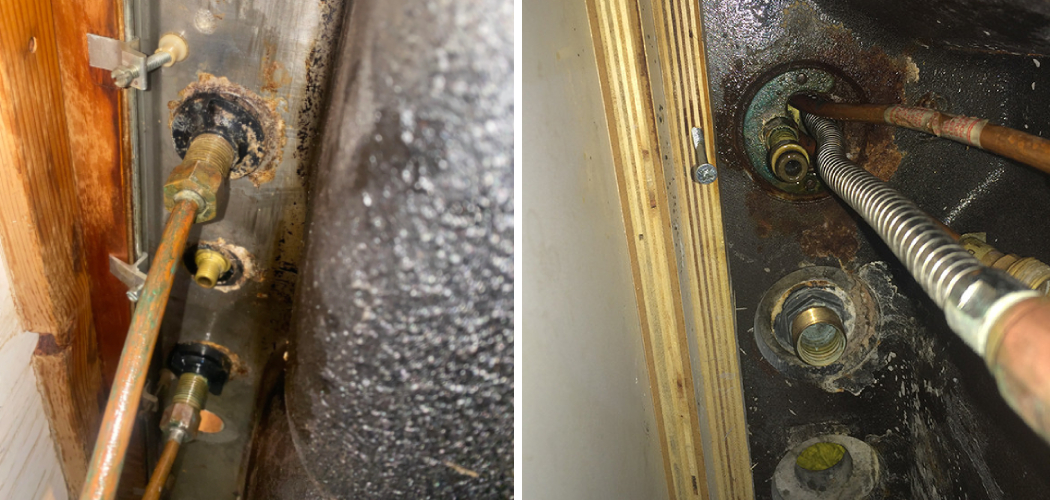Do you have a tough time trying to remove a metal faucet nut? It can be annoying and challenging, especially if you don’t have the right tools or know-how. Faucet nuts can become stuck for many reasons, including old age, corrosion, mineral buildup, and over-tightening.
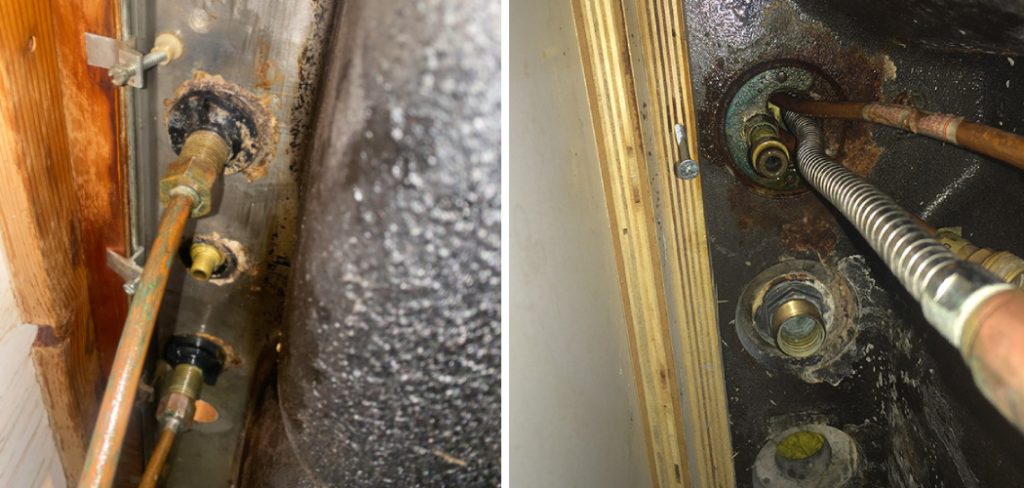
Fortunately, you can follow a few practical steps to remove a stubborn metal faucet nut with ease. In this post, we will take you through some DIY steps on how to remove a stuck metal faucet nut.
Can You Remove a Stuck Metal Faucet Nut?
Picture this: you’re attempting to replace your bathroom faucet, and you come across a stubborn metal nut that simply refuses to budge. It’s frustrating, messy, and all-around inconvenient. But fear not – there are solutions to your predicament.
With a little elbow grease, some clever tricks, and a touch of patience, you can successfully remove that pesky faucet nut and return to a beautifully updated bathroom. Whether you opt for a wrench, pliers, heat, or a combination of methods, the key is to stay calm and persistent. Don’t let a stuck nut get the best of you – show it who’s boss!
Why Should You Remove a Stuck Metal Faucet Nut?
When it comes to household repairs, few things are more frustrating than a stuck metal faucet nut. Not only can it prevent you from completing your plumbing work, but it can also be a major headache to remove. However, there are several reasons why it’s important to take the time and effort to remove a stuck metal faucet nut.
Firstly, leaving it in place can cause further damage to your pipes or faucet. Additionally, if you’re replacing your faucet or making other upgrades to your plumbing system, removing the old nut is necessary to ensure a proper and secure installation of the new fixtures. While it may seem tedious, taking the time to remove a stuck metal faucet nut is well worth the effort in the long run.
7 Steps to Follow on How to Remove a Stuck Metal Faucet Nut
Step One – Turn Off your Water Supply
Before removing the stuck faucet nut, you need to switch off the water supply to avoid flooding. Go to your home’s main water valve and shut it off. This action will prevent water from flowing through the faucet, allowing you to disassemble the fixture without water.
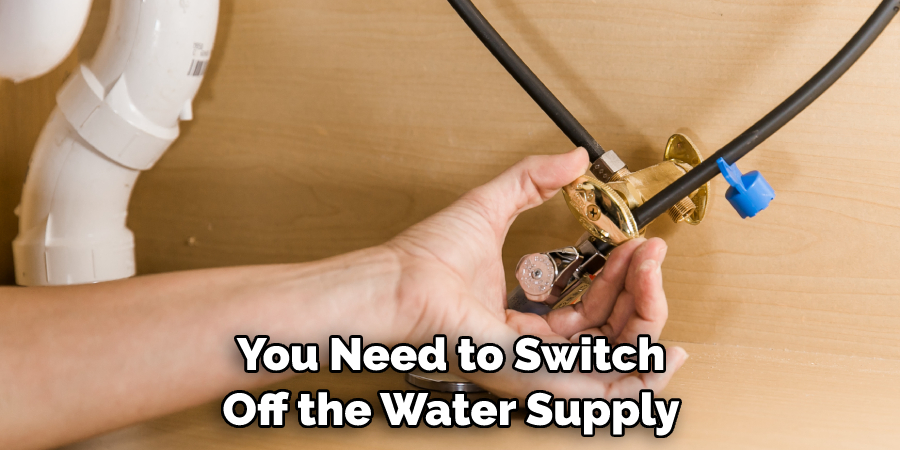
Step Two – Use Penetrating Oil to Loosen the Nut
If the faucet nut is stuck due to rust or corrosion, you can use penetrating oil to loosen it. Spray the oil on the nut and let it soak for about an hour to help it seep into the threads and loosen the rust or corrosion. Use a wrench to test its looseness. If it is still tight, you can spray more penetrating oil, and with patience, the nut will eventually loosen up.
Step Three – Use Heat
Another way to loosen a stuck faucet nut is to apply heat to the metal. This process will cause the metal to expand slightly, allowing the nut to break free. You can use a heat gun or hairdryer to heat the nut.
Apply the heat for about two minutes to allow the metal to expand. Then use a pair of pliers or wrenches to turn the nut. Repeat the procedure until the nut comes off.
Step Four – Use a Wrench and Hammer
If the above method doesn’t work, you can try to use a wrench and hammer to loosen the faucet nut. Use a wrench to lock the nut, then hit the handle of the wrench with a hammer or mallet. The sharp blow will loosen the nut’s threads, providing you with a chance to remove it.
Step Five – Use a Pipe Wrench
If the above methods are unsuccessful, you can try using a pipe wrench. Place the adjustable head of the wrench onto the nut and turn it counterclockwise. This will help break up any corrosion that has formed on the metal threads, making it easier to remove. If needed, use a hammer to give it extra leverage.
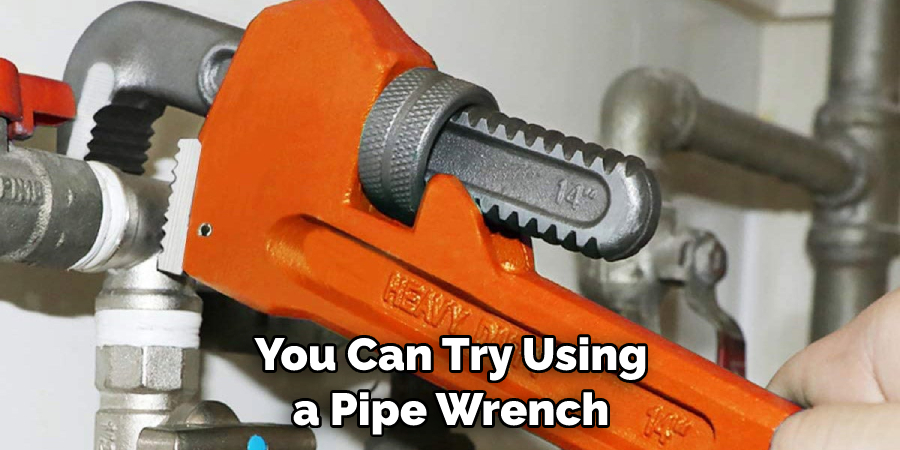
Step Six – Cut the Nut
You can cut off the nut using a hacksaw if all else fails. Before you start cutting, make sure to put on safety goggles and heavy gloves for protection. Place the blade of the saw against one side of the nut and begin cutting. You may need to cut more than once to get the nut off.
Step Seven – Replace the Faucet
Once you have removed the stuck nut, you can replace it with a new one. To do so, you must buy a replacement nut of the correct size and type for your faucet. Ensure all the parts fit together properly before connecting them to the faucet. Then turn on the water supply and test out your newly installed faucet.
These seven steps should help you remove a stuck metal faucet nut without causing any damage to the fixture. With patience and skill, you can quickly restore your faucet to its original condition. Just remember to exercise caution when handling tools, and always make sure to turn off the water supply before starting any repairs.
5 Considerations Things When You Need to Remove a Stuck Metal Faucet Nut
1. Shut Off the Water Supply
The first step in removing a stuck metal faucet nut is to shut off the water supply to the faucet. This can be done by turning off the main water valve or shutting off the valves behind the faucet. Once the water is shut off, open up the faucet to release any pressure that may have built up inside and allow it to drain completely.
2. Apply Penetrating Oil
Once the water has been shut off, apply a penetrating oil such as WD-40 or Liquid Wrench to the stuck nut. Let this sit for at least 15 minutes before attempting to remove it, as this will help loosen any rust or corrosion that may have built up on it over time.
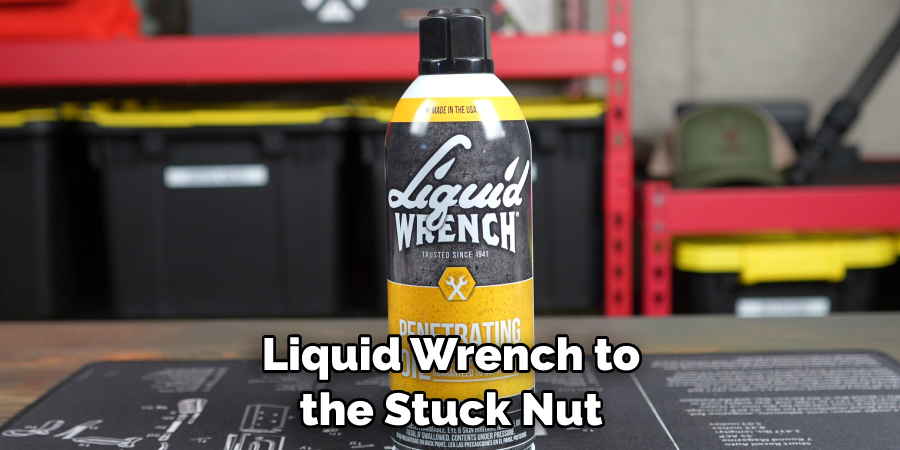
3. Use a Wrench
Once you’ve applied penetrating oil, use an adjustable wrench to try and loosen the nut from its position. If this does not work, you may need to use a pair of pliers or a specialized tool called an “easy out,” designed specifically for removing stuck nuts and bolts.
4. Heat It Up
If all else fails, you can use heat to loosen up a stubborn nut. Heat a flathead screwdriver with a propane torch until it is hot enough to melt through any rust or corrosion on the nut, and then use it to try and pry it loose from its position. Be sure not to overheat the screwdriver, as this could cause damage to your faucet and surrounding pipes!
5. Call in Professional Help
If none of these methods work, your best bet may be to call in professional help from a plumber or handyman who has experience with removing stuck nuts from faucets. They will likely have access to specialized tools that can make quick work of even the most stubbornly stuck nuts!
5 Benefits of Remove a Stuck Metal Faucet Nut
1. Avoid Damage to the Faucet
One of the primary benefits of removing a stuck metal faucet nut is that it can help you avoid damaging it. If you attempt to remove the nut without using the proper tools or techniques, it can cause damage to both the nut and the surrounding components.
Additionally, if you use too much force while attempting to remove the nut, it can cause it to strip or break, making it even more difficult to remove.
2. Easier Access to Repairs
Removing a stuck metal faucet nut also makes it easier for you to access other parts of the faucet for repairs or replacements. Without removing the nut, you could not access any of these components, making repairs and maintenance much more difficult.
3. Save Time
Removing a stuck metal faucet nut can also save you time in the long run. If you cannot remove the nut without using specialized tools or techniques, it could take quite a bit of time before you can successfully remove it. By taking the time to remove the nut properly, however, you can save yourself from spending extra time on repairs or replacements in the future.
4. Reduce Stress
Removing a stuck metal faucet nut can also help reduce stress when attempting repairs or replacements on your faucet. Trying to work around a stuck metal faucet nut can be very frustrating and stressful, so taking steps to ensure that this issue is dealt with first can help reduce stress when working on other parts of your faucet.
5. Prevent Leaks
Finally, removing a stuck metal faucet nut can help prevent leaks in your sink or tub due to improper installation or repair work on your fixtures. A loose or improperly installed metal faucet nut can cause water leaks which could lead to costly water damage if left unchecked for too long.
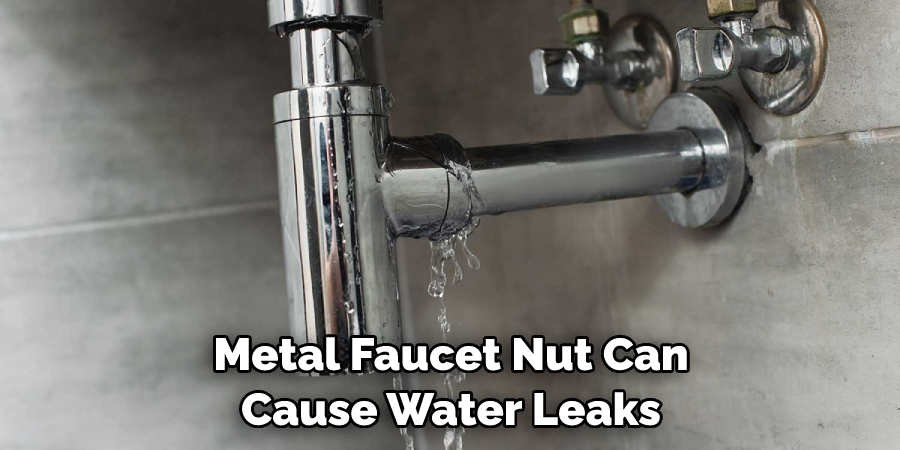
Taking steps by properly removing any stuck nuts before beginning any repair work will ensure no leaks occur during installation or repair work on your fixtures.
Conclusion
Removing a stuck metal faucet nut can be frustrating, but with our DIY steps highlighted above, you can do it yourself at home. Remember to switch off your water supply before removing the fixture and to be careful not to cause destruction. If all else fails, know it is okay to call a professional for assistance.
We hope these tips come in handy and help you work smarter, not harder. Thanks for reading our post about how to remove a stuck metal faucet nut.

